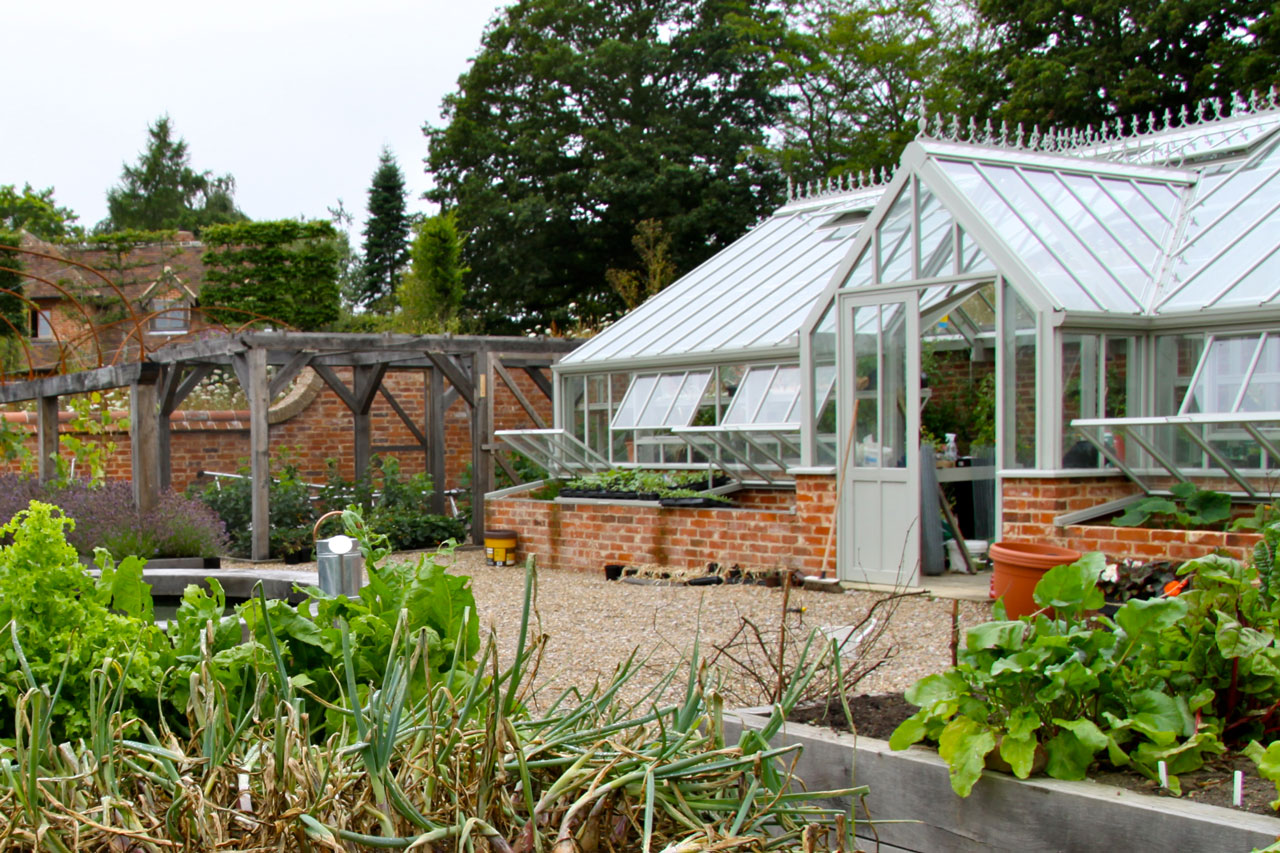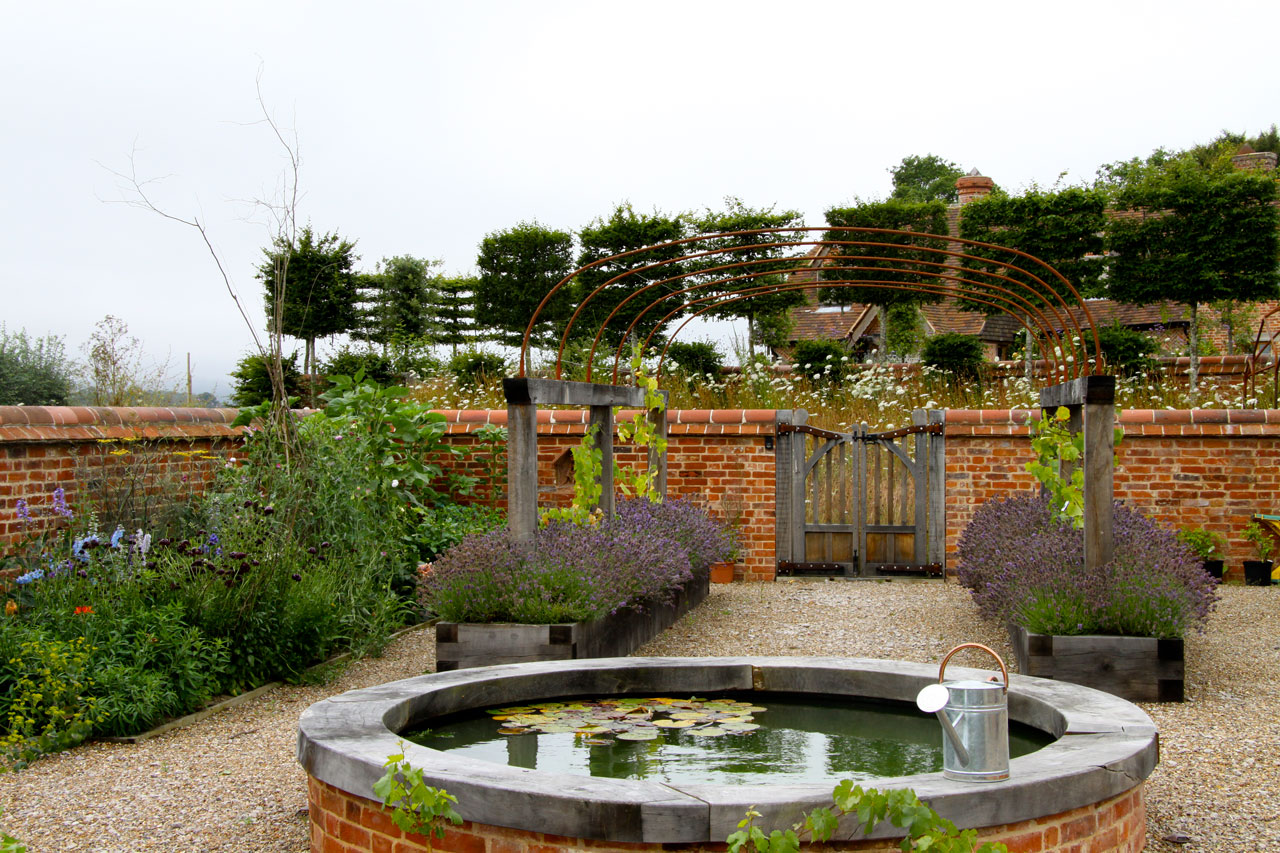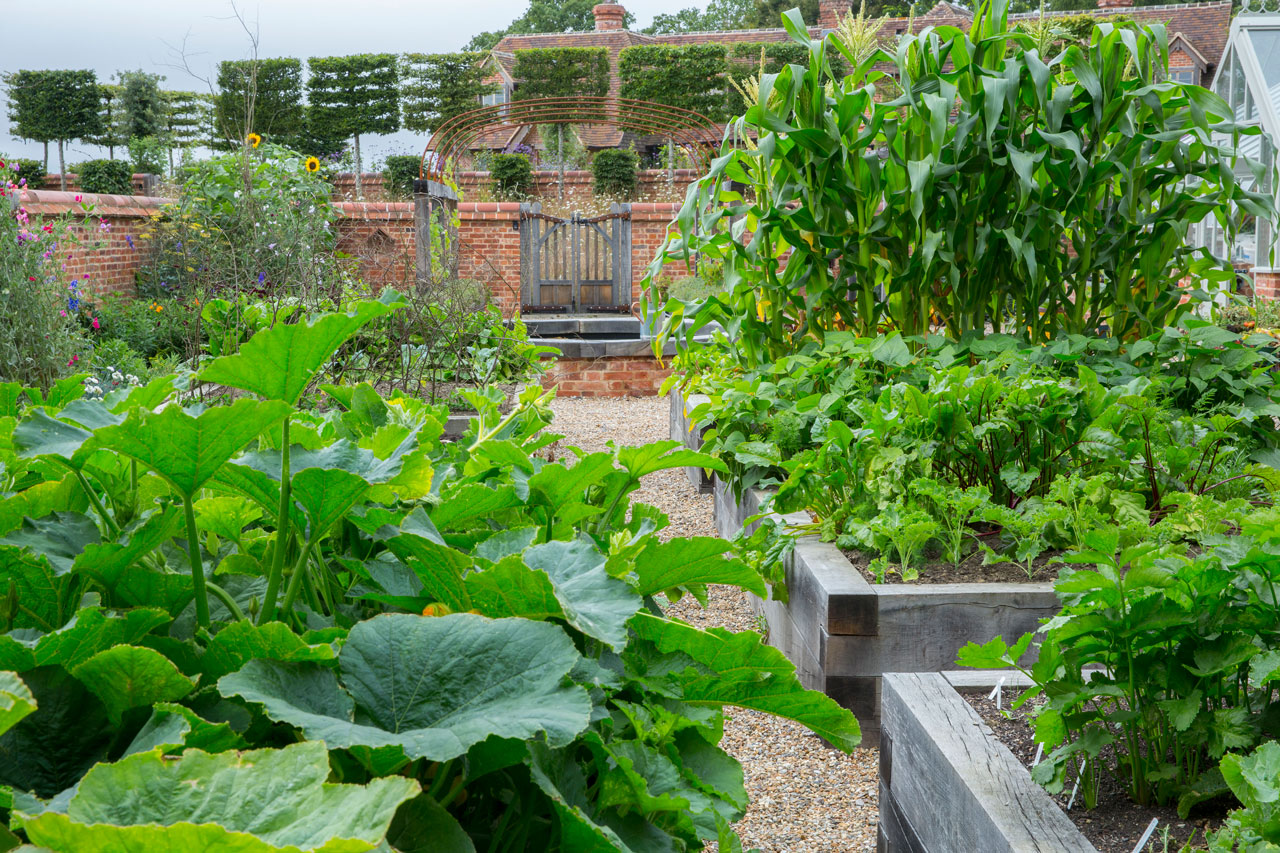Working With Old Walled Kitchen Gardens
When working with an old walled kitchen garden the first question is often how much to repair, restore or renovate.
Walls
Walls are the first consideration, as they provide the framework and structure, and their repair may be the first item on the first aid triage list. It’s alarming how many people are actually killed by garden walls each year and so this must be the priority if the garden is in use. Taller old walls may not have the stability we would recommend these days and so a structural engineer’s input can be helpful to see if additional reinforcement such as piers are needed for example. Old brickwork can also become unsound or blow if softer cheaper bricks were used as was sometimes the case for the working end of the garden. There can also be an issue if there have been unsympathetic cement mortar repairs over the years with too strong a mortar, which would cause the wall to crack along a fault line. The Historic England permission process for repairs is less onerous than for full restoration or renovation work and so a conversation with your local planning office about the work required and the materials proposed may be enough to begin work.
Structures
Structures tend to be the biggest cost, so once the site is safe and wall repairs underway it’s worth taking a good look at what you want to use the garden for and what structures you can afford to salvage and will need to achieve this. A fully working kitchen garden will need amenities like storage areas, potting sheds, compost bins, a bothy or toilet and tea making space out of the rain, glasshouses exotic and temperate, cold frames and areas for standing out and hardening off. Exotic glasshouses will need to be heated and temperate glasshouse will need to be frost proof. Costs of heating can be high and so insulation is also very useful, as is shading. An automatic vent opening mechanism is a life saver in the summer and possible to retrofit with some original fittings. Wooden glasshouse frames are beautiful and if well maintained last for many years, whilst aluminium frames have become popular because they need little on-going maintenance. Structures within the curtilage of a listed building will need listed building consent and this usually extends to a walled garden, which may also be listed in its own right, so do seek permission before demolishing or renovating any structures or walls.
The original layout of the garden may still be evident but if you are starting with an empty plot it is worth looking in the national archives to see how the land was worked in the past. A typical layout involved access paths in a cross shape to a central point, often with a dipping pond or fountain. Paths were wide enough for a wheelbarrow or two to pass, whereas modern ride-on machinery may prefer wider paths and turning spaces, so these should be considered without making the space ungainly.
Services
Services may need to be updated as electricity may not have been run to the garden if it relied on wood or coal for heating. New cables should be planned carefully, for example they may need to run under gateways to avoid compromising foundations. Gas is an option for a smaller greenhouse and if this is the case plan an area to store large bottles out of site with easy access to roll them into place.
Walled gardens are highly dependent on water and often had a central dipping pool to allow easy access to fill watering cans and bowsers. They would often have had a garden boy whose main job was to fill the bowser regularly and take it to the watering points. To begin with he would only be allowed to actually distribute the water under close supervision! There may also have been a water tank underground which has the added benefit of keeping the water cool and avoiding evaporation. We like to install rainwater harvesting from the greenhouse roofs if itis not present as that is a large expanse of clean water for collection. For this to work greenhouses need gutters to collect the water, and if running into a dipping pond you will need an overflow and holding tank for times of heavy rain. An automatic mains top up is also essential if you are going to rely on an automatic watering system for precious crops. Water from run off from paths can be used but needs careful filtering and can present contamination problems so perhaps best used just for flushing the bothy loo. It may be worth considering a bore hole if you have a large site.
Drainage is helped by the fact that many old gardens are on a gentle south facing slope, to catch the optimum sunshine. Any gradient has the benefit of allowing water to run off and installing permeable surfaces will help with this as well. Gravel or bark work well and we also use traditional crushed brick, or breedon gravel which has the benefit of being easy to drive wheels over.
Positioning
If you are positioning a new walled garden bear the aspect in mind to get your fruit to grow earlier and to extend the season. The more south facing wall you have the better for this, which is why some old gardens have wavy ‘crinkle crankle’ or forcing walls to maximise the warm surface area to grow fruit against. If you have plenty of space try to avoid putting a vegetable garden in a frost pocket, often found on the lee side of a hill where the cold air settles and the wind doesn’t reach to blow the frost away.
Planning
Planning for maintenance at the outset will save time and reduce running costs. Paths and edges that are easy to look after save hours of labour, if planning beautiful box hedges for example remember they need cutting, and clippings need to be collected. One alternative is raised beds with lovely warm wooden edges to sit on, but in a larger garden where access on to the beds is needed a simple edging is a good solution to allow an easy step in. Metal edging looks very smart and untreated oak will also last a long time and looks very in keeping with warm brick walls.
Finally, have fun selecting plants for each area and each wall by requirement for shade and sun. Choose fruit trees for self-pollination and ensure that ornamental fruits don’t make eating fruit bitter; plan your beds for crop rotation and for permanent crops like asparagus and soft fruit; plan a beehive or a no-maintenance log hive to aid pollination; and don’t forget somewhere.
USEFUL RESOURCES
Historic England
Listed building consent
Bee Kind Hives
Log hives
Walled Kitchen Gardens by Susan Campbell
Available from Bloomsbury and Amazon
This article first appeared in the Listed Heritage Magazine, July 2019
Categories



